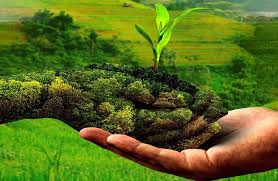Impacts of Agricultural Technology
The Rise of Impacts of Agricultural Technology: Transforming Farming for a Sustainable Future.
In recent decades, Impacts of agriculture technology has undergone a significant transformation. At the heart of this change is Impacts of Agricultural Technology (Ag Tech) — the use of technology to enhance farming efficiency, productivity, and sustainability. From traditional tools to cutting-edge innovations, Ag Tech is reshaping how food is grown, managed, and distributed across the globe.
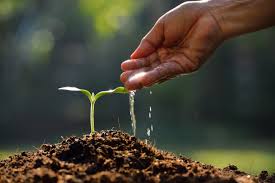
What is Impacts of Agricultural Technology?
Impacts of Agricultural technology refers to the application of scientific and engineering principles in farming practices. It includes everything from simple machinery like tractors to advanced innovations such as drones, precision farming tools, artificial intelligence (AI), and biotechnology.
1.Key Innovations in Impacts of Agricultural Technology
-
Precision Farming
Precision agriculture uses GPS, sensors, and data analytics to monitor and optimize crop production. Farmers can apply fertilizers and pesticides more accurately, reduce waste, and improve yields. -
Drones and Satellite Imagery
Drones equipped with cameras and sensors can capture detailed images of fields. These images help farmers monitor crop health, irrigation needs, and pest infestations in real time. -
Smart Irrigation Systems
Using sensors and automation, smart irrigation systems supply water to crops only when needed, reducing water waste and improving plant health. -
Genetically Modified Organisms (GMO):
Through biotechnology, scientists develop crops that are more resistant to pests, diseases, and extreme weather, ensuring higher productivity and food security. -
Artificial Intelligence and Machine Learning
AI systems analyze large volumes of data to predict weather patterns, recommend planting strategies, and detect crop diseases early. -
Vertical Farming and Hydroponics
These techniques allow crops to be grown in stacked layers or without soil, making farming possible in urban environments and areas with limited arable land.
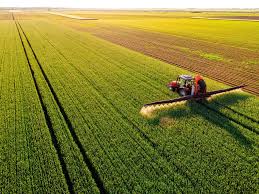
2.Benefits of Impacts of Agricultural Technology
-
Increased Productivity: Farmers can produce more with fewer resources.
-
Sustainability: Tech-driven farming reduces environmental impact through efficient use of water, fertilizers, and land.
-
Cost Savings: Automation and data analytics minimize labor and input costs.
-
Food Security: Impacts of Agricultural Technology helps meet the growing global food demand, especially as populations rise.
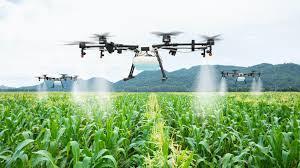
3.Challenges and Considerations of Impacts of Agricultural Technology
Despite its benefits, Impacts of Agricultural Technology faces several challenges:
-
High Initial Costs: Advanced tools and systems can be expensive for small-scale farmers.
-
Digital Divide: Access to technology varies, especially in rural or underdeveloped areas.
-
Data Privacy: The collection and use of farm data raise concerns about ownership and privacy.
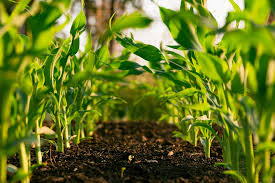
4.The Future of Ag Tech in Impacts of Agricultural Technology
The future of Impacts of agricultural technology looks promising, with continuous innovations aiming to make farming more resilient and adaptive. Integration with renewable energy, blockchain for supply chain transparency, and the use of robotics for planting and harvesting are just a few of the upcoming trends.
As global challenges like climate change, population growth, and resource scarcity intensify, Ag Tech will play a vital role in ensuring that agriculture remains productive, sustainable, and efficient
1. Precision Agriculture
Uses data and Impacts of Agricultural Technology to optimize farming practices.
-
GPS & G.I.S (Geographic Information Systems): For mapping fields, soil analysis, and efficient planting.
-
Sensors: Monitor soil moisture, nutrients, and crop health in real-time.
-
Yield Monitors: Track crop output to improve decisions on seed variety, fertilization, and irrigation.

2. Drones and Aerial Imaging
Unmanned aerial vehicles are used to:
-
Survey and map large fields.
-
Monitor crop health and detect diseases.
-
Assess irrigation coverage.
-
Create maps for planning and planting.
3. Smart Irrigation Systems
Advanced irrigation methods that reduce water usage:
-
Drip Irrigation with Sensors: Delivers water directly to plant roots based on real-time data.
-
Automated Irrigation Systems: Controlled by weather forecasts and soil conditions.
4. Internet of Things (IT):
Connected devices and systems in agriculture:
-
Track livestock health and movements.
-
Control greenhouses (temperature, humidity, lighting).
-
Monitor machinery for maintenance and efficiency.
5. Artificial Intelligence (AI) and Machine Learning
Used to analyze big data from farms and make informed decisions:
-
Predict crop yields and disease outbreaks.
-
Automate pest detection and control.
-
Optimize planting and harvesting schedules.
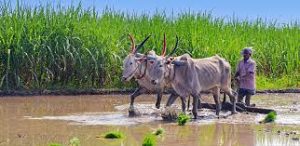
6. Biotechnology
Genetic and biological advancements in crop and livestock:
-
GMO (Genetically Modified Organisms): Improve resistance to pests, diseases, and weather.
-
C.R.I.S.P.R and Gene Editing: Enhance crop traits such as shelf life and nutrition.
-
Bio-fertilizers and Bio-pesticides: Reduce reliance on chemicals.
7. Automation and Robotics
Machines that reduce labor and increase accuracy:
-
Autonomous Tractors: GPS-guided for plowing, planting, and harvesting.
-
Robotic Harvesters: Pick fruits and vegetables with minimal damage.
-
Weeding Robots: Remove weeds using AI and mechanical tools.
8. Vertical Farming and Hydroponics
Innovative farming methods that require less space and soil:
-
Hydroponics: Growing plants in nutrient-rich water.
-
Aeroponics: Growing plants in misted air.
-
LED Lighting and Climate Control: Used in indoor farms for year-round production.
9. Blockchain Technology
Used in the supply chain to:
-
Track product origin and safety.
-
Improve transparency in food distribution.
-
Ensure fair trade and certifications.
-
Impacts of Agricultural Technology uses a variety of techniques to improve crop yield, conserve resources, and maintain soil health. These techniques vary depending on climate, soil type, crops, and local farming practices. Below are some of the most widely used agricultural techniques:
 1. Crop Rotation
1. Crop Rotation
-
Growing different crops in the same area in sequential seasons.
-
Prevents soil nutrient depletion, controls pests and diseases, and improves soil fertility.
2. Inter cropping
-
Planting two or more crops together on the same field.
-
Increases biodiversity, reduces pest problems, and improves land use efficiency.
3. Conservation Tillage
-
Minimal or no plowing of the soil.
-
Preserves soil structure, reduces erosion, and maintains organic matter.
4. Organic Farming
-
Avoids synthetic fertilizers and pesticides.
-
Uses natural methods like composting, crop rotation, and biological pest control to maintain soil health and productivity.
5. Irrigation Techniques
-
Drip Irrigation: Delivers water directly to plant roots, conserving water.
-
Sprinkler Irrigation: Mimics rainfall using overhead pipes and nozzles.
-
Flood Irrigation: Traditional method, still used in many areas, though less efficient.
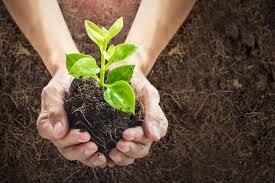
6. Terrace Farming
-
Cutting flat areas into hillsides to grow crops.
-
Prevents soil erosion and water runoff on steep terrain.
7. Agroforestry
-
Combining trees with crops or livestock on the same land.
-
Enhances biodiversity, provides shade, improves soil, and offers additional income.
8. Mulching
-
Covering the soil with organic or plastic materials.
-
Conserves moisture, suppresses weeds, and maintains soil temperature.
9. Integrated Pest Management (IPM)
-
Combines biological, cultural, physical, and chemical tools to manage pests.
-
Aims to reduce chemical use and promote sustainable pest control.
10. Fertilization Techniques
-
Green Manuring: Growing plants to plow them back into the soil for added nutrients.
-
Composting: Using decomposed organic matter to enrich soil.
-
Balanced Fertilization: Applying the right nutrients at the right time and quantity.
11. Hydroponics and Aquaponics
-
Hydroponics: Growing plants in water enriched with nutrients.
-
Aquaponics: Combining fish farming with hydroponics, where fish waste provides nutrients for plants.
12. Mechanized Farming
- Using machines like tractors, seed drills, and harvesters to reduce labor and increase efficiency.
The newest Impacts of Agricultural Technology in farming are revolutionizing agriculture by improving productivity, reducing environmental impact, and making farms smarter and more autonomous. Here are some of the latest and most innovative technologies being adopted in modern farming:
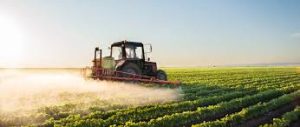
1. AI-Powered Farming Systems
-
Artificial Intelligence (AI) is now used to predict crop diseases, optimize irrigation, and automate machinery.
-
Example: AI drones can identify crop diseases early and target specific areas for treatment.
2. Autonomous Tractors and Robots
-
Self-driving tractors and agricultural robots (agriculture-bots) can plow, seed, spray, and harvest with minimal human input.
-
Example: Companies like John Deere and Ag-Xeed are releasing fully autonomous tractors with real-time decision-making.
3. Satellite and Drone-Based Imaging
-
Advanced multi spectral and hyper spectral imaging from drones and satellites provides detailed crop and soil data.
-
Helps in precision farming, allowing better crop monitoring and input optimization.
4. C.R.I.S.P.R Gene Editing
-
C.R.I.S.P.R-Case is a powerful tool used to precisely edit plant DNA for improved resistance to pests, drought, and diseases.
-
Unlike GMO, C.R.I.S.P.R is faster and more accurate in improving crop genetics.
5. Digital Twin Technology
-
Digital twins are virtual models of farms, tracking every input and outcome.
-
Farmers can simulate crop responses to weather, fertilizer, and planting methods before applying them in the real field.
6. Smart Irrigation with IT and AI
-
Sensor-based irrigation systems now use weather data and real-time soil moisture readings.
-
Systems powered by IT and AI automatically adjust watering schedules to conserve water and improve crop health.
7. Blockchain in Agriculture-Supply Chains
-
Tracks food from farm to table to ensure transparency, traceability, and trust.
-
Used for verifying organic certifications, reducing food fraud, and improving inventory management.
8. Vertical and Urban Farming Technologies
-
High-tech vertical farms use LED lighting, climate control, and hydroponics to grow crops indoors.
-
Makes farming possible in cities and areas with limited land.
9. Nanotechnology in Agriculture
-
Nano-fertilizers and nano-pesticides release nutrients or chemicals more efficiently.
-
Also used for seed coatings to improve germination and crop growth.
10. Renewable Energy Integration
Impacts of Educational technology Farms are increasingly using solar panels, wind turbines, and bio-gas systems to power equipment and reduce carbon footprint.
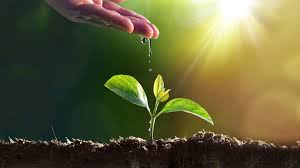
1. Crop Rotation of Impacts of Agricultural Technology
-
Growing different types of crops in the same field over different seasons.
-
Improves soil fertility and reduces pest and disease buildup.
2. Inter cropping of Impacts of Agricultural Technology
-
Planting two or more crops together in the same field.
-
Enhances soil nutrients, improves land use, and reduces pest spread.
3. Conservation Tillage of Impacts of Agricultural Technology
-
Reducing how much the soil is disturbed (e.g., no-till or reduced-till methods).
-
Minimizes erosion, improves water retention, and preserves soil structure.
4. Efficient Irrigation Techniques of Impacts of Agricultural Technology
-
Drip Irrigation: Water drips directly to plant roots—very water-efficient.
-
Sprinkler Systems: Distribute water like rain—used for larger areas.
-
Surface/Flood Irrigation: Traditional method, less efficient but still common.
5. Mulching of Impacts of Agricultural Technology
-
Covering soil with straw, leaves, or plastic.
-
Conserves moisture, suppresses weeds, and regulates soil temperature.
6. Organic Farming of Impacts of Agricultural Technology
-
Uses natural fertilizers (like compost) and pest control (like Neem oil).
-
Avoids synthetic chemicals and promotes ecological balance.
7. Mixed Farming of Impacts of Agricultural Technology
-
Raising crops and animals together on the same farm.
-
Efficient use of resources—animal waste fertilizes fields, crops feed livestock.
8. Agro-forestry of Impacts of Agricultural Technology
-
Growing trees and crops or raising animals on the same land.
-
Prevents soil erosion, improves biodiversity, and provides shade and income.
9. Integrated Pest Management in Impacts of Agricultural Technology
-
Combines biological, mechanical, and chemical methods to control pests.
-
Reduces overuse of chemical pesticides and promotes ecological balance.
10. Green Manuring of Impacts of Agricultural Technology
-
Growing certain plants (like legumes) and plowing them into the soil to improve fertility.
-
Adds organic matter and nitrogen naturally.
11. Precision Farming of Impacts of Agricultural Technology
-
Using GPS, sensors, and data to optimize planting, irrigation, and fertilization.
-
Reduces waste and improves yields.
12. Hydroponics and Aqua-ponics of Impacts of Agricultural Technology
- Hydroponics: Growing plants without soil, using nutrient-rich water.
- Aqua-ponics: Combines fish farming with hydroponics—fish waste fertilizes the plants.
